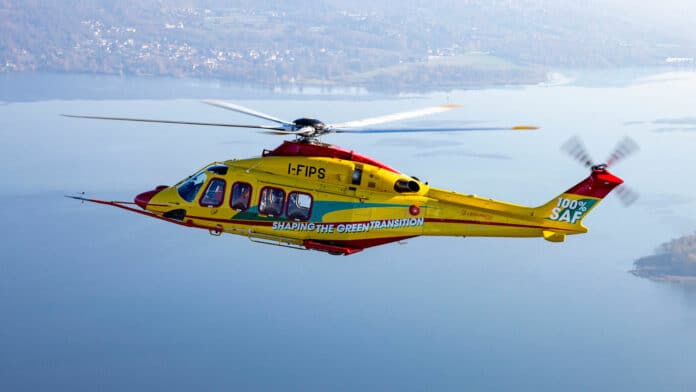Aircraft equipment manufacturers like Pratt & Whitney Canada are taking active steps towards reducing emissions in the aviation sector and achieving net-zero targets. The company is actively exploring enabling technologies that necessitate minimal alterations to existing aircraft designs.
Their recent achievement of successfully completing the inaugural flight for a helicopter powered by the PT6C-67C engine using 100% Sustainable Aviation Fuel (SAF) is a remarkable milestone in the industry’s commitment to sustainable aviation practices. The flight was conducted with a Leonardo AW139 helicopter, which required minimal modifications to accommodate the SAF.
The 75-minute flight and ground tests took place at Leonardo’s facility in Cascina Costa di Samarate, Italy. It evaluated engine performance at multiple power variations and demonstrated no significant differences in the response to the new fuel compared with the use of Jet A1 fuel.
The AW139 is powered by two Pratt & Whitney Canada PT6C-67C engines that can each produce 1,700 shaft horsepower (shp) thermodynamic. The helicopter leverages advanced digital capabilities for maintenance and training, including fleet flight data management and simulation for pilots, cabin crews, and technicians.
All main civil-certified types within Leonardo’s helicopter product range are certified for operations using SAF with a blended ratio of up to 50%.
“Flights such as these are instrumental in our efforts to ensure 100% SAF compatibility for our engines,” said Maria Della Posta, president of Pratt & Whitney Canada. “This is the first time a PT6 engine has been flown using 100% SAF, marking this as a significant milestone for the unrivaled engine series. Proving the engine’s capability with drop-in SAF provides the foundation for the future of the PT6 in sustainable aviation and builds on its legacy of success.”
Pratt & Whitney is working towards achieving net-zero CO2 emissions by 2050 by pursuing smarter technologies, cleaner fuels, and greener business practices. Ensuring compatibility with 100% SAF is a crucial part of this strategy to enable more sustainable aviation.
